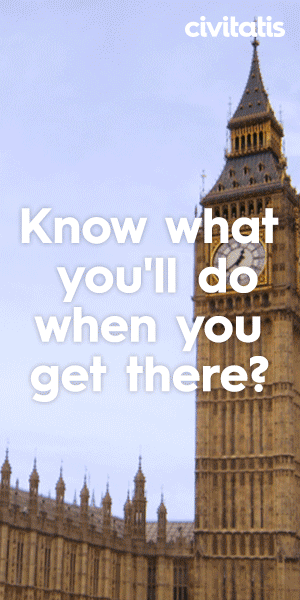Mazandaran Province covers most of Iran’s Caspian Sea coast. Its major population centres and cities sit on a sliver of land sandwiched between the Alborz mountains and the Caspian Sea. Here’s why you should visit Mazandaran Province.
What To See in Mazandaran Province Iran
Mazandaran Province | Getting There
Mazandaran province is located on Iran’s Caspian Sea coast. It’s roughly an hour to fly from Tehran to the Ramsar airport. Yet there is the option to drive. And the road to Mazandaran is one of Iran’s most scenic.
Chalus Road snakes its way through the Alborz Mountains from Tehran to the Caspian Sea. It took us roughly 3.5 hours to drive from Tehran via Karaj to Chalus on the coast. And another 30 minutes along the coast from Chalus to Tonekabon.
Chalus Road is well maintained. Yet when we traversed its length the path was slow going. Chalus Road is one of the busiest roads in Iran. And the weather conditions given its altitude can make it treacherous. When we made the journey it was a holiday and beginning to snow.
The huge mountains and stunning scenery make for unparalleled vistas. Chalus Road is one road you definitely don’t want to rush along. So while it may be slow going with weather and traffic that only serves to give you more time to enjoy your surroundings.
Chalus Road | alborz Mountains






Chalus Road features many small towns along its length. With some functioning as way stations and others once popular resorts. On our journey along Chalus to Mazandaran Province we took the opportunity to detour, in order to investigate some of these towns and to try the Abgoosht (Persian Stew). And you should too.
However be warned that the snow can get deep and the roads icy. More than once we found ourselves trying to push the car along ice covered roads. We had no snow tires or chains. And we frequently met patches where we simply couldn’t get traction. Which only served to make these inaccessible snow covered towns all the more mysterious.
Chalus Road | Towns along the road




Descending the Caspian Sea side of the Alborz you’ll experience a slew of temperate zones. From frigid grass covered mountainsides to rainforests, the Chalus Road is not short of scenery.
I only captured a picture of one such structure, but there were many oddly shaped buildings. The building in the photo below that looks like a cross between a cave and Count Draculas lair was one such building. It was some sort of closed down shop. And definitely one of the strangest buildings I’ve seen.
Chalus Road | Descending the Alborz








Mazandaran Province | Suburbs and Attractions
Mazandaran Province is large and its broken down into 20 smaller counties. Each named after its administrative centre. Arriving via Chalus Road we entered Chalus county and continued west to Tonekabon.
On the Western edge of Mazandaran Province lay Tonekabon and Ramsar. With the Alborz mountains rising up like a huge wall behind the plains of Mazandaran on the edge of the Caspian Sea.
Tonekabon is like older parts of the Gold Coast in Australia or Miami in the USA. It’s starting to develop high rise buildings and functions as a beach destination in summer. Year round in Tonekabon you can watch the fishing boats leaving and returning with their catch for local markets.
In contrast to Tonekabon Ramsar appears more densely populated and has lower set buildings. Ramsar is home to the regional airport. Which serves Mazandaran with flights to Tehran and nearby regions and countries.
In the period of the Pahlavi before the Revolution Ramsar was where the wealthy came for summer holidays. Ramsar had luxurious hotels, casinos and beach clubs.
Today Ramsar looks decidedly more residential than the main parts of Tonekabon. Beach front malls, restaurants and markets abound in Tonekabon with more historical and nature oriented tourist attractions located in Ramsar.




Ramsar | Things to do
In Ramsar the main attraction for me was the cable car. Located in the Green City Recreational Complex Of Ramsar is a cable car running up the side of the Alborz mountain range. It covers 2km in about 15 minutes and climbs to a height of more than 700 meters.
From the station at the top of the cable car you can embark on zip lining adventures through the treetops. While I’m not a fan of heights I found myself content with the view from the top of the mountain and didn’t go on the zip lines.
But from the top of the mountain you can look out over Ramsar and the Caspian Sea. Or from the rear of the platform you can enjoy the view out over the rain forests. I found the view quite spectacular and we spent a couple of hours just taking in the view. There’s also a number of restaurants at the top.









In Ramsar is the former Mazandaran Ramsar Hotel. No longer a functional hotel or casino it is now a tourist attraction and a kind of museum. It was built by Reza Shah and served the upper echelons of Iranian society pre-Revolution. It was one of the Shah’s favourite destinations. And the Pahlavi family were regulars in this part of Iran.
At the other end of the long boulevard running toward the Caspian Sea is another former casino and an old beach club.
Before the Islamic Revolution of 1979 this part of Ramsar was an international travel destination. It served not just Iranian elites but foreign dignitaries and movie stars. And the street was once called ‘Casino Boulevard.’ But after the revolution it was renamed to Moallem (Teacher) Square.




Tonekabon | Things to do
The main attractions for me in Tonekabon were the beaches and the fish. Watching the fisherman launch and retrieve their vessels was fascinating. I was surprised by the large variety of fish and molluscs that live in the Caspian Sea.
The Caspian is mildly saline and is an inland lake as opposed to a sea in the sense of a salt ocean or coast. Yet it has a surprising diversity of life. The beaches were covered in shells. And the fish market had a huge array of different fish species.
The Fish market in Mazandaran Iran
I didn’t take any photos inside the fish market as the fishermen didn’t seem to want photos taken inside. But it is a stop I would advise everyone to make. Unlike fish markets elsewhere in the world where the fish are generally dead and laid out on ice, the fish market in Tonekabon has the catch alive and displayed in large fish tanks.
Customers to the fish market choose the fish they want to take home from large aquariums displaying the fish that belong to each vendor. As the fish swim around they choose the one they want.
From watching a few deals done there even seamed to be a special variety of Caviar Sturgeon sold from the back of vehicles in the car park. It was sold in the same way you’d imagine a drug deal would be done in other parts of the world.
The Sturgeon was a fish that had the consistency of chicken and tasted like pork. It was something I’d never willingly eat again. But it went okay with Belgian beer. However the more common whitefish while boney was fabulous when grilled over an open fire.











All across Iran in general, but in Tonekabon in particular, there was an abundance of fruit trees. In Tonekabon there were the standard sour or bitter orange trees but also more common citrus varieties and species such as kiwi fruit. Tonekabon had some huge sweet citrus that looked like a lemon and that I’d never seen anywhere else before. And haven’t seen since.
Conclusion | And the Return to Tehran
Mazandaran Province was probably one of my favourite places in Iran. It was in different parts big city and rural area. It reminded me a lot of Canberra in Australia with a much larger waterfront. Though the respective administration cities were more built up and busier it felt like one large rural area. Along a single main road. It was beautiful.
Returning to Tehran from Mazandaran we chose to fly. As we had already driven Chalus Road once. Driving to the airport the radio was on and news was starting to emerge of an American airstrike against an Iranian target in Iraq.
It was the 2nd of January 2020. As we arrived at the airport the news stations were starting to reveal that General Qassem Soleimani, the leader of the QUDS Force, had been targeted and killed by Americans in Baghdad.
When I entered through the IRGC security checkpoint in the airport my passport was taken. My first thoughts were of hostage diplomacy. And my partner at the time began to abuse the IRGC personnel.
I told my partner to be quiet and I also apologised to the IRGC officers for her outburst. I then lead her over to some benches to sit down while they did their own thing with my passport. While the IRGC were doing their thing with my passport I wiped the encryption keys to my cloud storage accounts on my phone. So any sensitive or personal information on my phone couldn’t be recovered.
The IRGC personnel seemed to appreciate my acceptance that they were just doing their jobs. And they definitely appreciated my courtesy removing the angry girl from their area. After about 30 minutes one of them brought back my passport. And I was cleared to fly.
The Flight back to Tehran
On the flight back to Tehran was the Imam from Ramsar and his fellow mourners. Along with some Iranian individuals that seemed to hover around in the background everywhere I went from that day forward in Iran. I like to think of them as my Persian guardian angels.
And I’ll always wonder whether the Westerners that randomly appeared when visiting Palladium Shopping centre and started doing the same in Tehran, saw the Persians or if the Persians saw the Westerners. I guess neither side will ever confirm or deny.
Afterword
This never gets genuine airplay in Western media. General Qassem Soleimani was widely loved by the general population in Iran. He wasn’t just loved by the hardliners but by the moderates too. Soleimani was Iran’s ‘Silver Fox’ and he was remembered as both a gentleman and a soldier.
The general mood in Iran did change from the moment the airstrikes killing Soleimani were made public.
Most Iranians look forward to better relations with America. From what I saw in Iran the population were visibly saddened by the actions of Trump. They were distraught that one of the more strategic and rational individuals in the regime was killed. Some of the population seemed downright distressed by what they thought might happen next.
That evening reports were already emerging of Khamenei attending the national security council for the first time in decades. And the return rocket attacks that the Americans revealed weeks later were already seen on encrypted Telegram channels by early evening, that same day.
Liked this article? Subscribe to the blog below and check out our other travel articles on Iran.





